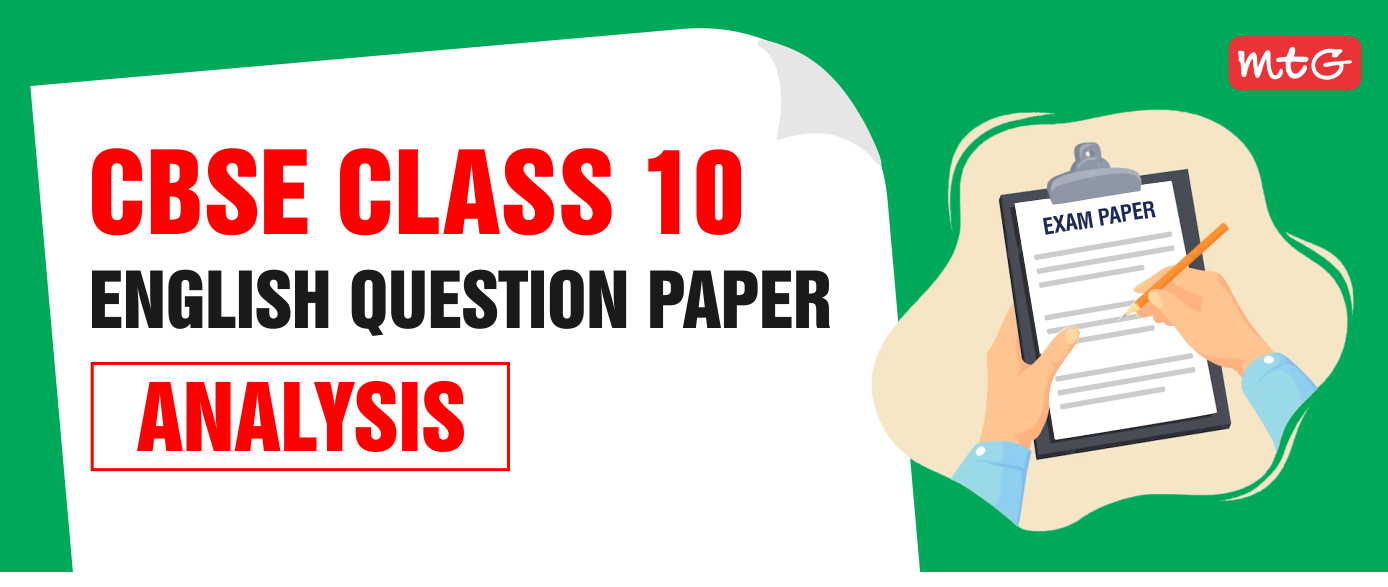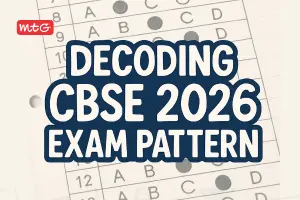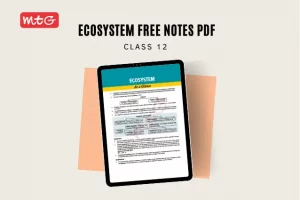The Central Board of Secondary Education has successfully conducted the CBSE Class 10 exam for English (language & literature) on 15th January. This was the first major subject of class 10th CBSE Board exams. The exam was held at over 7000+ exam centers across the country and 26 countries abroad for three hours (10.30 AM to 1.30 PM). The students were advised to reach the exam centers half an hour before the commencement of the exam.

The paper contains three sections i.e. Reading Skills, Grammar and Creative Writing Skills and Literature. The paper is of 80 marks with duration of 3 hours. In this blog, we’ll break down the key components of the Class 10 English paper, looking at the question patterns, the skills it tests, and strategies for tackling each section.
Detailed CBSE Class 10th English Board Exam Analysis
Here’s the detailed exam analysis by MTG experts.
The Class 10 English exam is an important milestone for students. The exam began with the English paper, which was held from 10:30 AM to 1:30 PM. Understanding the paper’s structure can help you approach it more effectively.
The difficulty level of this paper appears to be moderate to high, mainly due to its broad scope, involving multiple sections that test a range of skills. However, there are a few aspects that make the paper easier than the official sample paper. Here’s an analysis of each section’s difficulty:
Section A: Reading Skills
The comprehension passages are about common, relatable topics, making them approachable for students. The language used is simple and easy to understand. The questions are in line with the official sample paper format, and the topics themselves are not overly complex.
For example:
In the first passage (about kitchen gardens), the reader is required to make inferences and connect different ideas, such as the environmental benefits and challenges of urban gardening. The ability to identify nuances in the text is key.
The second passage (about silk production) demands analytical skills to identify and reason out facts about the silk industry, including the complex process and the reasons behind silk’s costliness.
There is a grammatical error in the second passage where the sentence should read: “It is made of natural protein fibre.” This small correction is key to conveying the intended meaning clearly.
These types of questions are typical for high-level exams, but their accessibility and clarity make them easier to approach.
Difficulty Level: Moderate
While the questions still require attention to detail, the simple language and the clarity of the passages make this section less challenging than expected.
Section B: Grammar and Writing Skills
This section tests grammar rules such as subject-verb agreement, proper tense usage, sentence structure, and error correction. Although the rules themselves are basic, the complexity arises in identifying subtle errors in a sentence.
The writing tasks require not only good writing skills but also the ability to organize thoughts coherently and concisely within a word limit. Letter-writing tasks, however, are relatively straightforward and have been repeated from previous years, making them easier for students who have already practiced them.
The analytical paragraph task, which focuses on “AI – Benefits and Drawbacks,” is particularly relevant in today’s context. This encourages students to think critically about contemporary issues while structuring their arguments logically.
Difficulty Level: Moderate
This section is more approachable than expected, mainly due to the familiarity of tasks and the simplicity of the topics.
Section C: Literature
The extracts from literature test comprehension and interpretative skills, requiring students to extract meaning, analyze themes, and interpret literary devices and characters. While the questions require a deep understanding of the texts, many of them are repeated from previous years, making them easier for students who are familiar with the material.
For example, analyzing the mood in a flying narrative or understanding the use of irony in “The Midnight Visitor” is a common type of question that tests interpretative skills.
Difficulty Level: High
While the content is standard for a literature section, the repetition of previous years’ questions gives students an advantage, as they are already familiar with the kinds of literary analysis expected.
Overall Difficulty:
This paper is moderately challenging overall. While it tests a wide range of skills—comprehension, grammar, writing, vocabulary, and literary analysis—the familiarity of many tasks (such as repeated letter-writing questions and literary extracts) and the simple language used throughout the paper make it more accessible. The inclusion of both factual content and abstract thinking, such as analyzing technological impacts or understanding literary themes, makes it suitable for students with good language proficiency.
However, it is worth noting that the paper is even easier than the official sample paper, and even an average student, as CBSE has mentioned in their guidelines, can score 50 percent with proper preparation and effort.
Trending – CBSE Sample Paper Class 10 Free PDF Download
Final Words
As the first major language exam of 10th CBSE curriculum is concluded, the students are suggested to move on further and prepare for the upcoming exams! The next exam is of science subject and is scheduled to be held on 20th February 2025. To prepare for the same, students are suggested to rigorously practice through ScoreMore 15 Sample Papers to help ace your exams.
Also Check: 5 Exam Hacks to Score 99% in Class 10th Board
Good luck!































